


C57BL/6-Tlr9tm1(TLR9)Bcgen/Bcgen • 110103
| Product name | B-hTLR9 mice |
|---|---|
| Catalog number | 110103 |
| Strain name | C57BL/6-Tlr9tm1(TLR9)Bcgen/Bcgen |
| Strain background | C57BL/6 |
| NCBI gene ID | 81897 |
| Aliases | TLR9 (Toll-like receptor 9) |
Gene targeting strategy for B-hTLR9 mice. The exon 2 of mouse Tlr9 gene that encode the extracellular domain was replaced by human TLR9 exon 2 in B-hTLR9 mice.
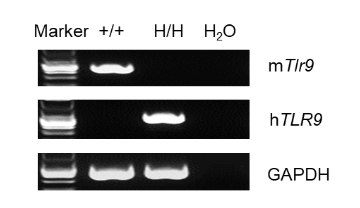
Strain specific analysis of TLR9 gene expression in WT and B-hTLR9 mice by RT-PCR. Mouse Tlr9 mRNA was detectable only in splenocytes of wild-type C57BL/6 mice (+/+). Human TLR9 mRNA was detectable only in homozygous B-hTLR9 mice (H/H), but not in wild-type mice.
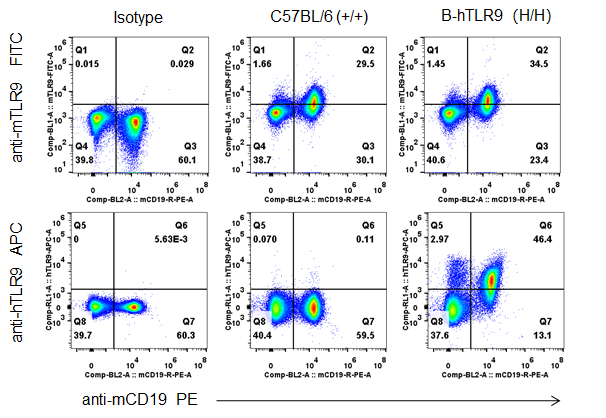
Strain specific TLR9 expression analysis in homozygous B-hTLR9 mice by flow cytometry. Splenocytes were collected from WT and homozygous B-hTLR9 (H/H) mice, and analyzed by flow cytometry with species-specific anti-TLR9 antibody. Mouse TLR9 was detectable in WT mice and homozygous B-hTLR9 due to the anti-mTLR9 antibody is cross-reactive between mice and humans. Human TLR9 was exclusively detectable in homozygous B-hTLR9 but not WT mice.
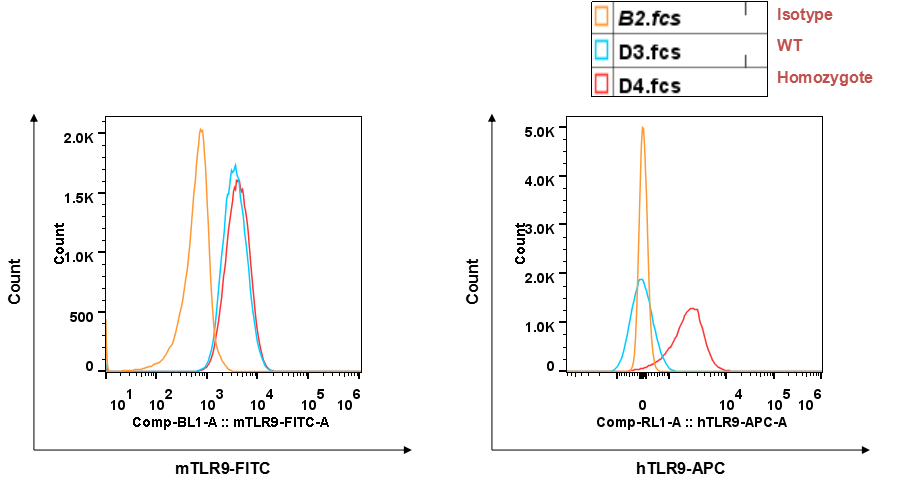
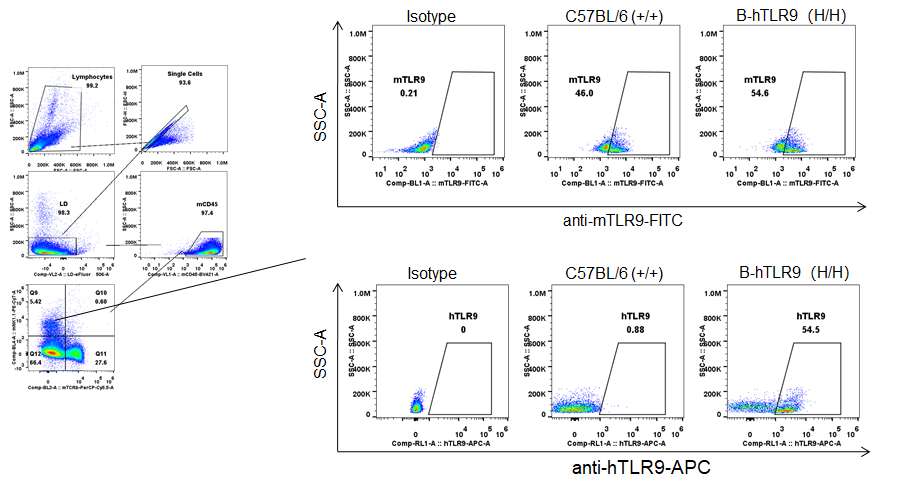
Strain specific TLR9 expression analysis in homozygous B-hTLR9 mice by flow cytometry. Splenocytes were collected from WT and homozygous B-hTLR9 (H/+) mice, and analyzed by flow cytometry with species-specific anti-TLR9 antibody. Mouse TLR9 was detectable in WT mice and homozygous B-hTLR9 due to the anti-mTLR9 antibody is cross-reactive between mice and humans. Human TLR9 was exclusively detectable in homozygous B-hTLR9 but not WT mice.
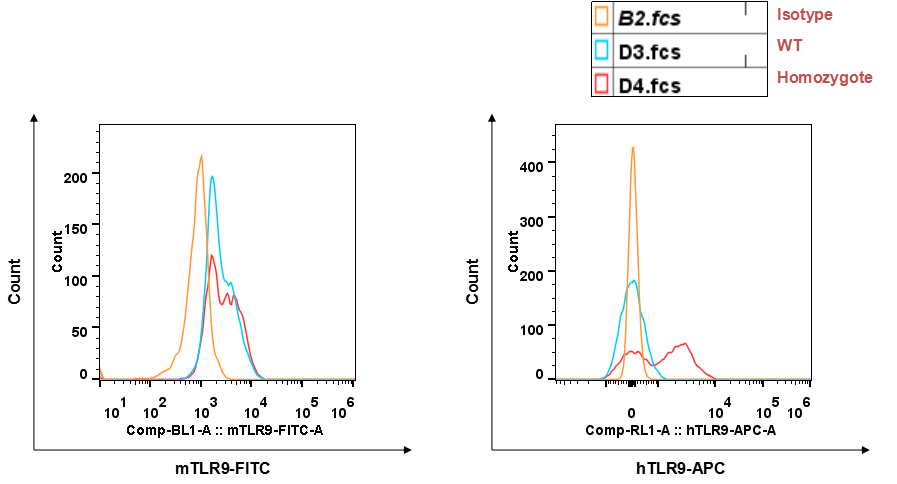
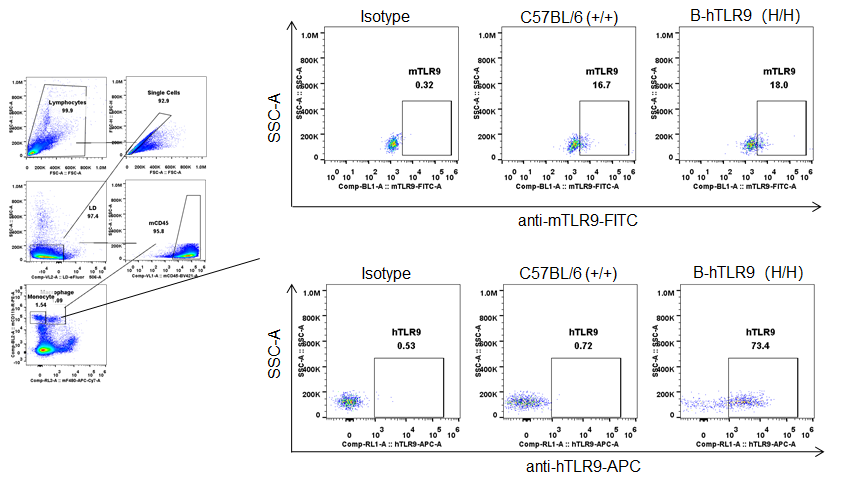
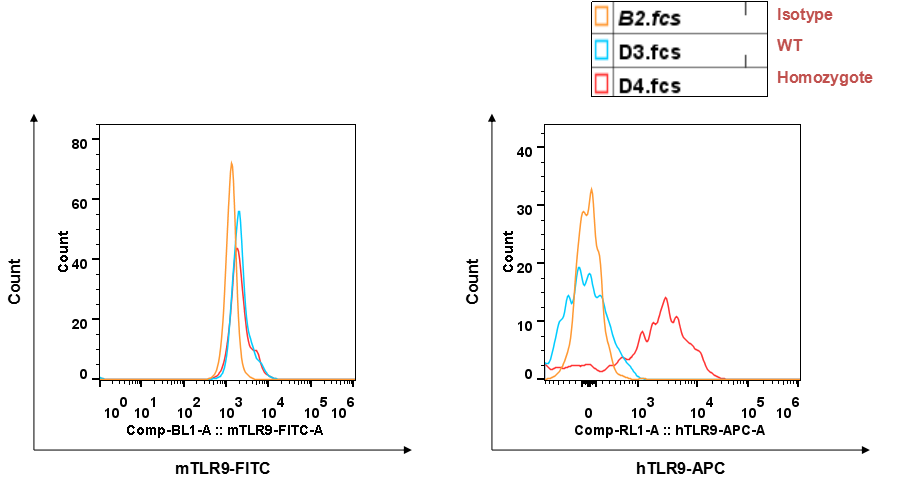
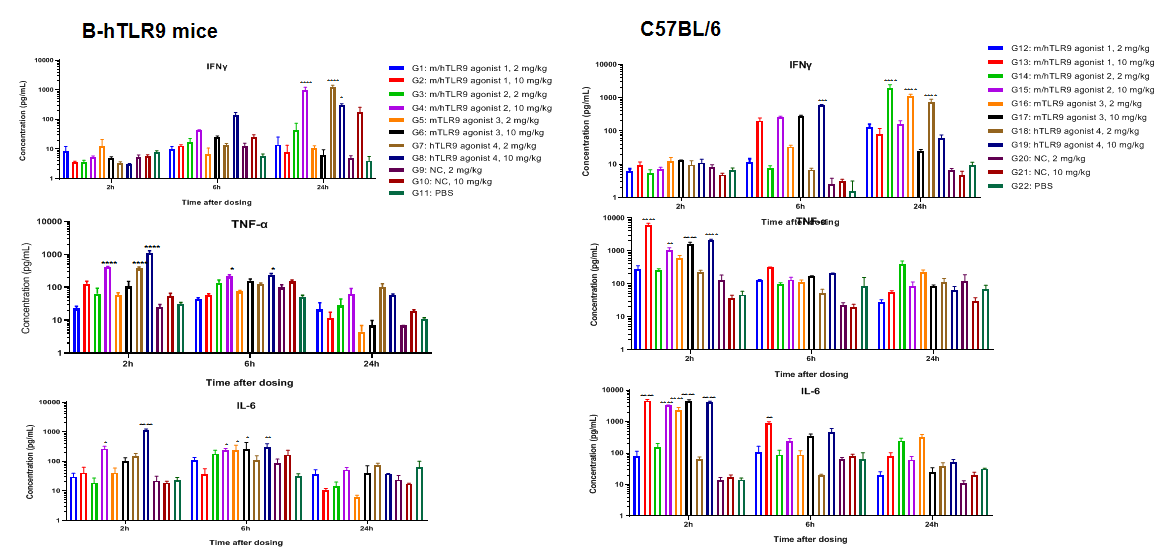
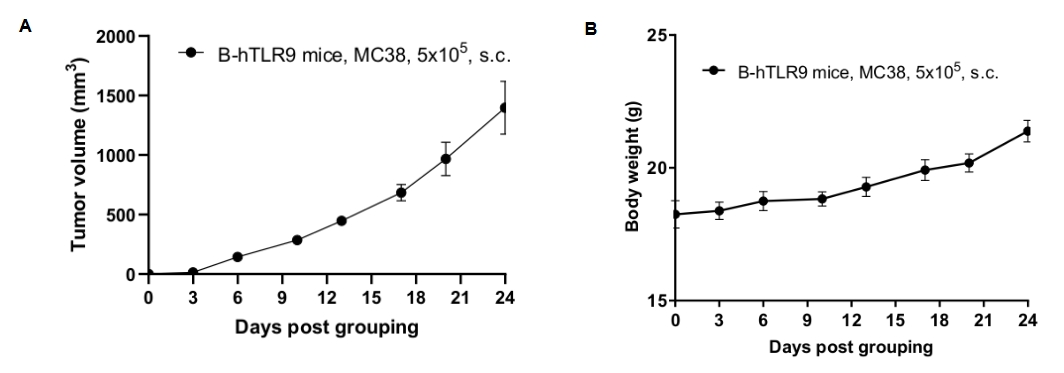
Subcutaneous homograft tumor growth of MC38 cells. MC38 cells (5x105) were subcutaneously implanted into B-hTLR9 mice (female, n=6). Tumor volume and body weight were measured twice a week. (A) Average tumor volume ± SEM. (B) Body weight (Mean± SEM). Volume was expressed in mm3 using the formula: V=0.5 X long diameter X short diameter2. As shown in panel A, B-hTLR9 mice were able to establish tumors in vivo and can be used for efficacy studies.